Katharine Hepburn’s eyes stare with pleasure and happiness: a ruby red glass goblet stands by the window in a shop in Venice, in the beautiful campo San Barnaba. The film is “Summertime” by David Lean and was shot in Venice in 1955, just before Venice closed its studios on the island of Giudecca.
The red glass goblet will help her meet a mysterious Italian man, interpreted by Rossano Brazzi. Tangible symbol of their controversial, passionate and fragile summer romance, the goblet looks like a heart the man holds already despite the defying gaze the American lady casts on him.
Let’s be honest: would you have imagined this scene with Rossano Brazzi holding a chandelier or a glass horse?
The first documentation recorded about glass production in Venice dates back to the year 982. It was in that year that a “fiolaro” named Domenico signed the act of the donation of the island of San Giorgio Maggiore to the benedictine order. The “fiolari” were the artisans in Venice who made bottles in glass, “fiola” in Venetian language, with a larger bottom and thin neck. They also produced drinking glasses that were low, very simple objects and, when decorated, featured some simple engraving or enamel motifs.
In the middle of the 1400s though, Angelo Barovier invented Murano crystal glass, particularly clear, getting rid of the impurities that were part of the production process. This opened up new opportunities for glassware, no longer viewed as something linked to functionality —I need to drink, so here is a glass!— but introduced aesthetics, design… and luxury.
That invention arrived at the right moment: when the political and economic situation in the Mediterranean area dramatically changed at the expense of Venice, the Republic of the Doges started promoting the export of luxury ware such as silk fabrics, lace and of course crystal glass.
Making glass became an art and also for our drinking glass there arrived the moment to change shape. Sure, you could still use it to drink… But no longer a simple piece, the drinking glass became an object appreciated for its beauty, with a foot, a stem and the bowl. Variations started appearing especially for the stem, viewed as the piece where the bravura of the glass blower would show more. Throughout all these centuries, we have seen: stems with leaves, spirals looking like a spring, fruit, crooked stems, lace effects, little wings, birds, flowers and much more. Different colors, texture, sizes… just have a look at Paolo Veronese’s Dinner at Levi’s House at the Accademia galleries…
When we visit the Glass Museum on the island of Murano we can see such a variety also because Murano artisans would change the shape to accommodate all their clients’ different requests 🙂
You can find wonderful goblets at some special antiques galleries as Bac Art in Dorsoduro. And if you like today’s production don’t miss the delicate filigree goblets by Antonio Seguso or the colorful or engraved pieces at Carlo Moretti’s.
And if you pass by Campo Santa Maria Mater Domini, you will likely notice a gallery with the wonderful goblets by Igor Balbi. Then you are not sure what to think: goblets of all colors, shapes, sizes attract your attention… slowly you understand you are looking at glasses that you will never use for drinking and will wonder, does it make any sense? And that’s why you will stare at these works.
Igor started when he was 19 years old and learnt from his father, Italo, and his uncles. His works are made in the laboratory near the gallery, in Venice. He collaborates with very well known glass masters, such as Vittorio Costantini and Lucio Bubacco. It’s all Murano glass (although open to use American glass if required), and it’s lamp working —“soft glass”, blown using the centripetal and gravity force! The incredible details of these objects made me think they are works you enjoy for their aesthetic appeal, for their attractive variety, exploiting the pleasure-focused intimate nature of a drinking glass… you touch, you look… pure pleasure of design!
Exactly, pleasure, enjoyment… I must say, this post brought me back to the functionality that was at the origin of the drinking glass and I spent a great afternoon with our well known “oste” in Venice, Giovanni D’Este. At his top class wine bar, “I Rusteghi”, he explained to me how a drinking glass helps you understand and appreciate wine (but also coca cola!). Which drink? Which glass shape? If the wine is aromatic, if it’s tannic or not, then you need different glasses. How the wine and the oxygen get in your mouth, touch your lips and eventually reach our best anatomy laboratory, our tongue. Not to mention how your nose will be involved… And how do you hold a glass? Some say by the foot —but we both agreed it was not so easy… so, yes, the stem has a reason to be.
Fearing I would eventually turn out not be able to drink a glass of wine in relax, without thinking of all this, I would like to end this short contribution to this most sensual (in all senses) glassware with a musical tribute… and what else but with the aria by Giuseppe Verdi in La Traviata (the first at the Fenice Opera House in Venice, March the 6th, 1853)?
Here is the videoclip of the Venice New Year’s Concert 2005 – Orchestra and Choir of the Teatro la Fenice:
Toast (Let’s Drink From The Joyful Chalices)
[Alfredo] Let’s drink, drink from the joyful chalicessince the beautiness is blossoming.
And might the fleeting hour get inebriated at will
Let’s drink among (those) sweet quivers
that Love makes arise,
since that eye goes to (his) almighty heart.
Let’s drink, (my) love, (so that) love among the chalices
will get hotter kisses [Chorus] Ah! Let’s drink, (so that) love, among the chalices, will get hotter kisses [Violetta] With you, with you, I’ll be able to share
my cheerful time;
Everything is crazy, crazy in the world
what is not pleasure
Let’s enjoy (the pleasures), fleeting and fast
is the joy in love,
it’s a flower that blossoms and dies,
neither it can be enjoyed longer
Let’s enjoy, it’s calling us, it’s calling us an ardent
flattering accent.
by Luisella Romeo
registered tourist guide in Venice, Italy
www.seevenice.it




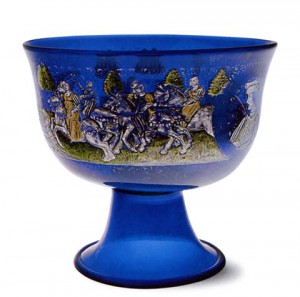

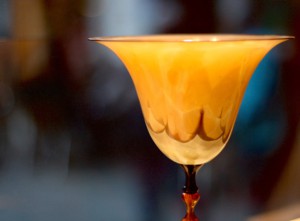
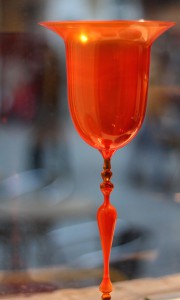
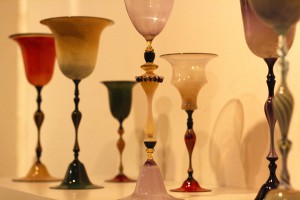





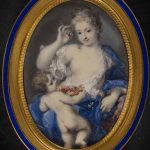


🙂 Looking forward to seeing more glass when we’re there next summer.
Thanks Luisella!
-Rob